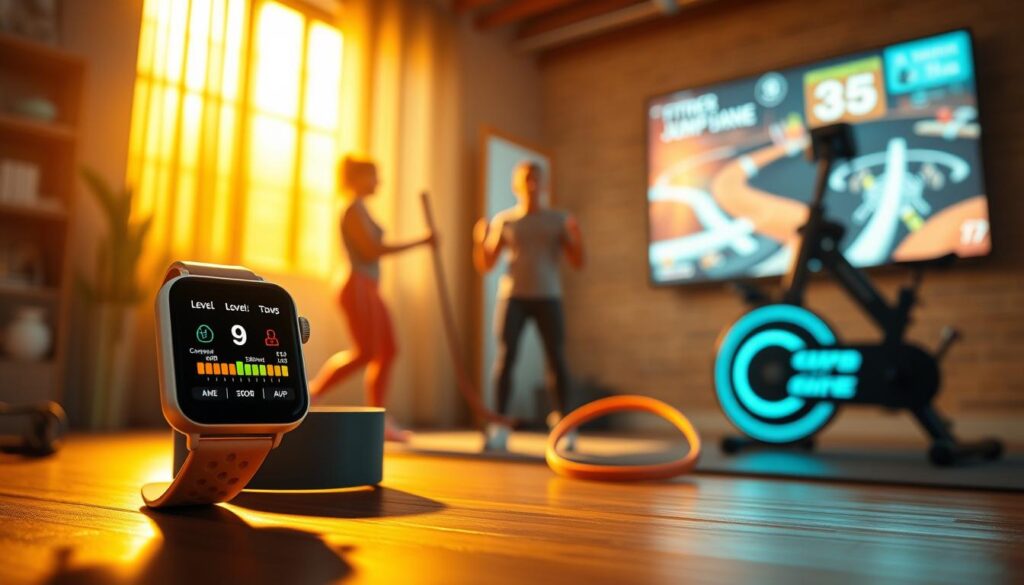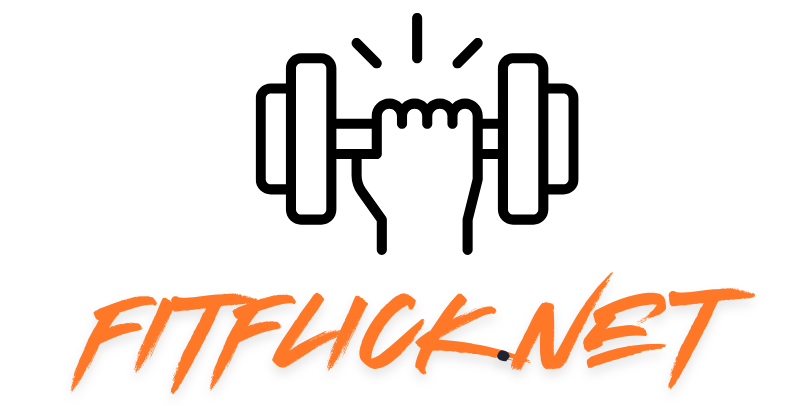Did you know that individuals using gamified fitness apps report a 25% higher adherence rate to their exercise routines compared to traditional methods1? This surprising statistic highlights the growing impact of gamification in transforming how people approach their workout routines. By integrating game-like elements such as points, badges, and leaderboards, fitness programs are becoming more engaging and effective.
Studies show that gamification can increase motivation levels in fitness programs by up to 30%, making it easier for users to stay consistent1. Platforms like Nike+ Run Club and Fitbit have successfully incorporated these strategies, turning mundane workouts into dynamic, goal-oriented experiences. This approach not only keeps users engaged but also fosters a sense of accountability and achievement.
With approximately 70% of users finding gamified fitness experiences more engaging than standard programs, it’s clear that this trend is here to stay1. Whether through digital apps or in-person gym activities, gamification is reshaping the way people achieve their health objectives. This article explores how these innovative methods are making fitness more accessible and enjoyable for everyone.
Key Takeaways
- Gamified fitness apps increase adherence rates by 25% compared to traditional methods1.
- Motivation levels in fitness programs can rise by up to 30% with gamification1.
- 70% of users find gamified fitness experiences more engaging1.
- Platforms like Nike+ Run Club and Fitbit are leading the way in gamified fitness.
- Gamification fosters accountability and achievement in workout routines.
Understanding Fitness Gamification and Its Impact on Health Goals
Gamified approaches to physical activity are revolutionizing how people stay active. By integrating game mechanics like points, badges, and leaderboards, these methods turn routine workouts into engaging experiences. This approach not only boosts motivation but also helps individuals achieve their goals more effectively2.
What Is Gamification in Physical Activity?
Gamification in physical activity involves applying game design elements to workouts. Apps like Peloton and Strava use features such as progress tracking and challenges to make exercise more interactive. These tools transform mundane routines into dynamic, goal-oriented tasks3.
For example, setting a daily step goal or competing with a friend can significantly increase engagement. Studies show that users of gamified apps are 30% more likely to stick to their routines compared to traditional methods2.
How Gamification Transforms Exercise Routines
Gamification reshapes exercise routines by adding elements of competition and achievement. Leaderboards and badges create a sense of accomplishment, while social features foster accountability. This combination drives consistent participation and long-term success4.
Platforms like Headspace incorporate storytelling and rewards to enhance user satisfaction. These psychological triggers make workouts more enjoyable and sustainable. As a result, individuals are more likely to maintain healthy habits over time2.
| App | Key Features | Impact |
|---|---|---|
| Peloton | Live classes, leaderboards | Boosts motivation through competition |
| Strava | Progress tracking, challenges | Encourages consistent activity |
| Headspace | Rewards, storytelling | Enhances user satisfaction |
In summary, gamification transforms physical activity by making it more engaging and rewarding. Whether through apps or in-person challenges, this approach helps individuals stay motivated and achieve their goals3.
Benefits of Gamification in Sports and Fitness
By adding elements like points and rewards, exercise routines are becoming more interactive and enjoyable. These systems not only boost motivation but also help individuals stay consistent with their activities5.

Increased Motivation & Enhanced Engagement
Gamified platforms use real-time data and leaderboards to keep users engaged. For example, earning points for completing challenges creates a sense of achievement. This approach has been shown to increase adherence rates by up to 30%5.
Tracking progress on these platforms also plays a key role. Users can see their improvements over time, which reinforces their commitment. Tools like virtual badges and rewards further enhance this experience6.
Improved Retention and Community Building
Gyms and fitness centers are leveraging gamification to build stronger communities. Leaderboards and group challenges foster a sense of competition and camaraderie. This social aspect encourages frequent visits and long-term retention.
Feedback loops integrated into these systems provide continuous improvement opportunities. For instance, platforms like Peloton use live classes and progress tracking to keep users motivated. This combination of competition and support drives consistent participation5.
“Gamification transforms physical activity by making it more engaging and rewarding.”
In summary, gamification is a powerful tool for enhancing motivation, engagement, and retention in sports and fitness. Whether through apps or gym systems, it creates a dynamic and rewarding experience for users6.
Integrating “Fitness Gamification: Making Health Goals Fun and Achievable” in Your Fitness Journey
Starting a new routine can be challenging, but integrating game-like elements can make it more engaging and sustainable. Research shows that 70% of users find gamified experiences more motivating than traditional methods7. This section explores practical tools and techniques to help you get started.

Tools and Techniques to Get Started
The first step is selecting the right program tailored to your needs. Apps like Strava and Peloton offer features such as progress tracking and challenges. These tools help individuals stay consistent by setting clear performance levels and milestones8.
Tracking systems play a crucial role in maintaining engagement. Wearable devices and mobile apps provide real-time data, making it easier to monitor progress. For example, earning badges for completing daily steps can boost motivation7.
Personalized video-guided workouts are another effective technique. These sessions incorporate gamified challenges, making exercise more interactive. Studies indicate that 80% of users report higher workout intensity when using such programs8.
Establishing a routine with regular performance checks is essential. Platforms that offer feedback loops and progress updates encourage continuous improvement. This approach not only enhances engagement but also fosters long-term retention7.
Leveraging technology can create a customized fitness journey. By combining structured plans with fun elements, individuals are more likely to achieve their goals. This method transforms exercise into a rewarding experience8.
Effective Gamification Strategies for Fitness Apps and Workouts
Incorporating game mechanics into exercise programs has proven to be a game-changer for user engagement. These strategies not only make workouts more enjoyable but also help individuals stay consistent with their routines9.
Employing Points Systems, Levels, and Badges
Points systems, levels, and badges are core elements of gamified apps. For example, apps like Nike+ Run Club and Strava use these features to reward users for completing daily tasks. This approach has been shown to increase user retention rates by up to 30%10.
Monthly challenges are another effective way to maintain interest. By breaking larger goals into smaller milestones, users feel a sense of achievement more frequently. This method is particularly effective in keeping individuals motivated over time9.
Leveraging Technology for Personalized Experiences
Personalization is key to sustaining engagement. Apps that adapt based on user feedback and performance rates create a more tailored experience. For instance, Peloton’s Lanebreak feature uses real-time data to adjust workout intensity, making it more engaging11.
Consistent challenges also foster a competitive yet supportive environment. Leaderboards and social features encourage users to push their limits while feeling part of a community. This combination of competition and support drives long-term success10.
“Personalized gamification experiences have the potential to increase user satisfaction ratings by 35%.”
In summary, integrating these strategies is part of a comprehensive approach to revolutionize exercise programs today. By focusing on user needs and leveraging technology, apps can create engaging and effective experiences11.
Real-Life Examples of Gamification in Gyms and Fitness Platforms
Across the country, gyms and fitness platforms are transforming routines with innovative gamification strategies. These methods are not just a trend but a proven way to enhance user motivation and retention rates12.
Case Studies and Success Stories
Orangetheory Fitness is a prime example of how gamification can drive results. Their heart rate-based system encourages members to stay in specific zones during workouts. This approach has led to a 20% increase in user activity levels12.
Swerve in NYC takes a different approach with team-based competition. Members are grouped into teams, turning exercise into a fun and engaging activity. This idea has significantly boosted gym retention rates13.
Nerdstrong Gym focuses on transforming mundane chores into exciting challenges. By incorporating storytelling and rewards, they’ve created a unique environment that promotes overall well-being. Their members report higher satisfaction and consistent attendance14.
Automated systems in these gyms track progress day by day, providing real-time feedback. This technology ensures that members stay motivated and see tangible results. Such gamification fitness strategies have proven to be highly effective in building strong communities12.
“Gamification transforms exercise into a rewarding experience, fostering long-term success.”
These real-life examples illustrate the power of gamification in creating engaging and effective fitness environments. By adopting these strategies, gyms can enhance user experience and achieve measurable success13.
Conclusion
Transforming exercise into an engaging journey has become a cornerstone of modern wellness strategies. By integrating gamified features like badges and leaderboards, physical activity evolves into an experience akin to a video game. This approach not only boosts motivation but also fosters a sense of accomplishment15.
Companies and gyms adopting these strategies have seen measurable progress over the year. Real-life examples show that gamification enhances engagement, retention, and community building. These elements create a dynamic environment where users thrive16.
Practical tools and techniques, such as progress tracking and personalized challenges, make it easier to stay consistent. By leveraging technology, individuals can turn exercise into a rewarding habit. This evolution in wellness strategies is redefining how people approach physical activity on a global scale17.




